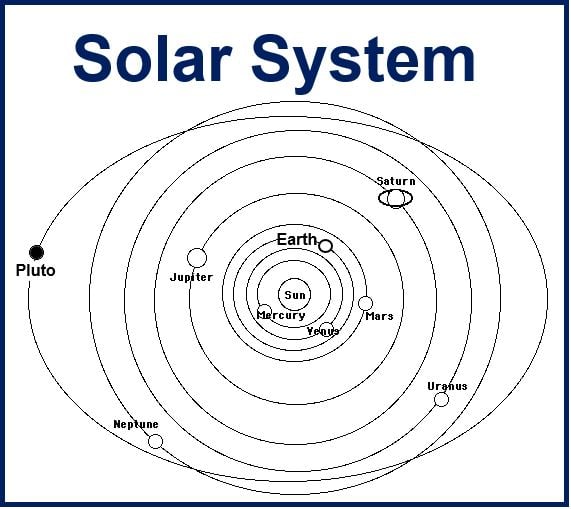Our solar system may have at least two more planets than astronomers had estimated, say scientists from the University of Cambridge in England and the Complutense University of Madrid in Spain. They are likely hidden well beyond Pluto and Neptune.
If the scientists’ hypothesis is confirmed, it could revolutionize solar system models, they say.
Scientists have spent decades arguing about the likelihood of other hitherto undetected planets in our solar system beyond Pluto. According to the calculations made in this latest study, there may be at least two unknown planets, which would explain the orbital behavior of extreme trans-Neptunian objects (ETNO).
In other words, the unusual orbital behavior and distribution of objects beyond Neptune can only be scientifically explained if there are at least two unknown planets beyond Pluto and Neptune.
According to the most accepted theory, the orbits of these objects, which travel beyond Neptune, should be randomly distributed, and by an observational bias, their paths should fulfil a series of characteristics: have a semi-major axis with a value of approximately 150 AU, an inclination of nearly 0° and an argument or angle of perihelion (closest orbit point to our Sun) also close to 0° or 180°. (AU = astronomical units, or times the Earth-to-Sun distance).
There are probably at least two unknown planets beyond Pluto and Neptune, the astronomers believe.
However, what the scientists observed in a dozen of these bodies was quite different. The values of the semi-major axis were very disperse (from 150 AU to 525 AU), the average inclination of their orbit was about 20°, and argument of Perihelion -31° – in none of the cases were they close to 180°.
Astrophysicist Carlos de la Fuente Marcos, a scientist at the UCM and co-author of the study, said:
“This excess of objects with unexpected orbital parameters makes us believe that some invisible forces are altering the distribution of the orbital elements of the ETNO and we consider that the most probable explanation is that other unknown planets exist beyond Neptune and Pluto.”
“The exact number is uncertain, given that the data that we have is limited, but our calculations suggest that there are at least two planets, and probably more, within the confines of our solar system.”
The scientists analyzed the effects of the “Kozai mechanism”, related to the gravitational perturbation that a large mass exerts on the orbit of another far smaller and distant one.
As a reference, they considered how this mechanism works in the case of a comet and large planet – comet 96P/Machholz1 and Jupiter.
The scientists’ results and subsequent proposal goes against current models that explain the formation of the solar system, which state that beyond Neptune or Pluto there are no other planets moving in circular orbits.
However, the ALMA radio telescope’s discovery of a planet-forming disk at 100 AUs from HL Tauri (the parent star) suggests that planets can form several 100 AUs away from the center of the system.
So far, the analysis is based on very few objects (just 13). Over the coming months, the team says it will be publishing results from a much larger sample of objects. Mr. de la Fuente said “If it is confirmed, our results may be truly revolutionary for astronomy.”
In 2014, two American scientists discovered a dwarf planet (called 2012 VP113) in the Oort cloud, a spherical cloud of mainly icy planetesimals believed to surround our Sun at a distance of up to 50,000 AUs. They believe the comet’s orbit is influenced by a dark and icy super-Earth, up to ten times the size of our planet.
References:
“Flipping minor bodies: what comet 96P/Machholz 1 can tell us about the orbital evolution of extreme trans-Neptunian objects and the production of near-Earth objects on retrograde orbits,” Carlos de la Fuente Marcos, Raúl de la Fuente Marcos, and Sverre J. Aarseth. Monthly Notices of the Royal Astronomical Society 446(2):1867-1873, 2015.
“Extreme trans-Neptunian objects and the Kozai mechanism: signalling the presence of trans-Plutonian planets?” C. de la Fuente Marcos, R. de la Fuente Marcos. Monthly Notices of the Royal Astronomical Society Letters 443(1): L59-L63, 2014.

